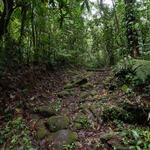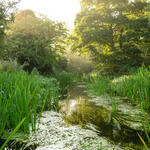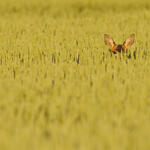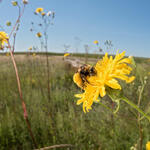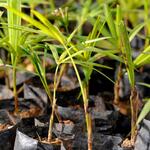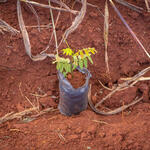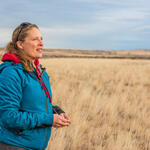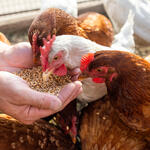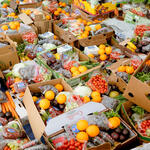- Date: 25 May 2023
- Author: Craig R. Beatty, Manager of Forest Strategy and Research, WWF; SBTN Land Hub Co-Lead
Yesterday, the Science Based Targets Network (SBTN) announced new land targets that will allow companies to consider how they impact land systems and set targets aligned with global nature goals. The land targets will be piloted over the remainder of 2023 and come after a year of discussion, development, and work by the SBTN Land Hub (which includes WWF, Conservation International, World Resources Institute, The Nature Conservancy, and FOLU/Systemiq). The targets are a response to the global need to better understand what nature needs and to design voluntary corporate targets that allow leading companies across all sectors to demonstrate they walk the path of a sustainable future for humanity. While the science is still developing and will continue to be refined during the pilot process and included in new iterations for the land targets, today companies can be certain that the SBTN land targets will be a part of that path.
- Date: 24 May 2023
- Author: Martha Stevenson, Senior Director of Strategy and Research
Today, the Science Based Targets Network released its first version of nature targets. This is a significant step in uniting the world’s leading companies to stabilize the climate, preserve freshwater resources, regenerate land, secure healthy oceans, and support biodiversity.
We know that business as usual can’t continue. We are exceeding planetary boundaries – the points of no return for nature, climate, and humanity as we know them. You only need to turn to the news to see the devastating effects: wildfires in the boreal, droughts in eastern Brazil, and the empty forests of the Congo, once teeming with biodiversity. These harbingers of what’s to come reflect an ecological system out of balance.
- Date: 22 May 2023
For our Rising Stars series, we're featuring the next generation of leaders who are working toward a more sustainable world. We recently spoke with Niamh Lehane, Manager, CSR and Sustainability with CVS Health, to learn about her role, connection to nature, and advice for those new to the field.
- Date: 16 May 2023
- Author: Alix Grabowski, Director, Plastic and Material Science, WWF
Plastic made from plants (also known as bioplastic or bio-based plastic) holds the potential to be more sustainable and better for the planet. But not all plant-based plastic is created equal. The type of feedstock (biological material used to make the plastic) matters, as does where and how it is produced and harvested. If these factors are not carefully considered, there may be unintended negative consequences for nature and people.
To ensure plant-based plastic is designed to build environmental, social, and economic resilience across ecosystems and communities, WWF convened the Bioplastic Feedstock Alliance (BFA). BFA brings a science-based perspective to the sourcing of plant-based plastics and their role in circular systems, ensuring that any shift to plant-based inputs brings lasting value to nature and people.
- Date: 15 May 2023
- Author: Suzy Friedman, Senior Director of Food Policy, WWF
Many of us understand the value of protecting forests but have yet to learn that protecting and restoring grasslands is of equal importance. Grasslands—so important for people, nature and climate—are being plowed up at an astounding rate both here in the U.S. and around the world. This is especially damaging as grasslands help us tackle the dual crises of biodiversity loss and climate change.
Grasslands are critical for biodiversity and nature. They hold approximately one-third of global terrestrial carbon stocks and provide climate resilience in the face of increasing droughts, heatwaves and wildfires. They are also essential to the livelihoods and food security of communities around the world and provide valuable resources like food, energy and wildlife habitat.
- Date: 11 May 2023
This time of year we celebrate mothers and all caregivers who take on the critical role of protector and nurturer. Mother figures are strong; they are resilient; and they create the conditions that allow others to grow and thrive. But this doesn’t just apply to people—mothers are just as important to forests. Every forest has “mother trees”: certain species of fully-grown, reproductive trees that allow forests to establish themselves, adapt to adversities and develop for the long-term.
- Date: 11 May 2023
- Author: Edward Wyatt
In Central Brazil’s vast Cerrado savanna, a grand experiment is taking place. Baru trees by the hundreds are being planted – some in the form of seeds, some as seedlings, and some well on their way to maturity in agroforests alongside other native vegetation. In some tracts, cattle graze among the more mature baru trees, in other areas, no cows are allowed.
The point of all this testing is to uncover the premium growing conditions under which the baru (Dipteryx alata) can thrive. The species, native to the Brazilian Cerrado, is a key part of reforestation efforts in the state of Mato Grosso do Sul. And overseeing a reforestation project on the Boa Vida farm near town of Bonito is a woman who is a “traditional seed guardian,” Elida Cristina Martins.
“I found that if we planted baru with bananas nearby it grows much faster than when planted alone, and the bananas help break the wind and keep the ground wet to keep the baru healthy,” she said as she gave a recent tour of her farm to a group of visitors from World Wildlife Fund (WWF) and the Tapestry Foundation.
- Date: 05 May 2023
After decades of farming small grains on his family farm and ranch near Buffalo, South Dakota, David Niemi decided the landscape needed a change. David’s father planted nearly 2,000 acres of their ranch into small grain production in the 1960’s to diversify their operation, and the family continued to plant annual crops on the field until recent extreme drought conditions made farming it no longer a viable option. David decided that the best thing he could do for the land and his family business would be to re-seed- drought tolerant, hardy native plant species.
While exciting, reseeding projects which aim to return previously tilled farm ground to resilient grassland can be very expensive for producers. Often producers who decide they’d like return farm ground to its previous resiliency are met with a cost prohibitive estimate for seed. The cost of replanting ground back to (or close to) its original species mix is typically costly enough that producers aren’t able to make the project work out on the balance sheet. Fortunately, partnerships, like the one between Air Wick and World Wildlife Fund’s Northern Great Plains Program, are being developed to support reseeding projects on the Niemi’s ranch and many others.
- Date: 01 May 2023
- Author: Sam Wildman, Sr. Program Officer – Sustainable Protein Systems, WWF
Over the past year, I’ve been lucky to collaborate with many American Feed Industry Association and Institute for Feed Education and Research staff and members, forging the first-ever partnership between our organizations. The goal was to elevate a vision that feed and animal nutrition can be a critical lever in providing sustainable solutions to food systems.
World Wildlife Fund’s mission is to build a future in which people live in harmony with nature. That includes making sure there is enough food for a growing population, while protecting our planet’s critical natural resources like water, forests, and clean air. The feed industry, with its global influence, has unique potential to help build that sustainable future.
- Date: 26 April 2023
- Author: Alex Nichols-Vinueza, Program Manager, Food Loss and Waste; Leigh Prezkop, Senior Program Officer, Food Loss and Waste
Organizations are increasingly working to reduce food loss and waste (FLW) across the food supply chain in support of their commitments to address food insecurity and climate change. That work often starts with donating or composting excess food to keep it out of landfills (where food waste emits methane). While this downstream work is incredibly important, the overwhelming majority of the food system’s environmental impacts occur upstream at the farm level, and the larger challenge is how buyers and growers can more closely coordinate to reduce FLW in a way that utilizes more of what we already grow and shrinks the footprint of agriculture.
In nature, nothing is wasted, and by mimicking this approach, we can develop more circular pathways that use surplus food along the supply chain to first feed those in need, and then develop new sales channels for growers to justify harvesting more of their crop, feed animals, and fertilize their crops—all helping to reduce our natural resource use and impact on biodiversity in the process.
